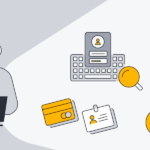
Understanding the Basics of Spyware
🔍 Understanding the Basics of Spyware 🔎
Have you ever been concerned about the confidentiality of your personal information while using your computer or mobile device? 🤔 In this blog post, we will delve into the world of spyware and explore its basic concepts. By understanding how spyware works and recognizing its signs, you can take steps to protect your privacy and keep your personal data secure. 💻🔒
Spyware is malicious software that aims to gather information from your device without your knowledge or consent. It can be stealthily installed through various means such as infected email attachments or disguised as legitimate software downloads. Once on your device, spyware may track your browsing habits, record keystrokes, capture screenshots, or even remotely access your webcam. 😱
One of the primary motives behind spyware is to collect personal data for profitable purposes such as targeted advertising or identity theft. By monitoring your online activities, spyware can build a profile of your interests and behaviors, enabling marketers to tailor advertisements specifically to you. 🕵️♂️
Detecting spyware can be challenging since it often operates silently in the background. However, there are some common signs that may indicate the presence of spyware on your device. If you notice unusual battery drain, decreased device performance, or an increase in data usage, these could be red flags to investigate further. 📶 Keep in mind that spyware can affect both computers and mobile devices, so it’s essential to protect all your devices, regardless of the operating system they use. 📱💻
In conclusion, understanding the basics of spyware is crucial in today’s digital world. Being aware of the signs and taking proactive security measures can help safeguard your personal information and maintain your privacy. By staying informed and using reputable antivirus software, you can minimize the risks posed by spyware and enjoy a safer online experience! ✅🌐💪
Common Ways Spyware Infects Your Devices
🔍💻
Spyware is a type of malicious software that infiltrates your devices, compromising your privacy and security. Whether it’s your smartphone, computer, or tablet, spyware can find its way in through various channels. In this article, we will explore some common ways spyware infects your devices, helping you understand the risks and take necessary precautions.
1. Phishing emails: One of the most prevalent methods of spyware infection is through phishing emails. These emails are disguised as legitimate messages from trusted sources but contain malicious attachments or links. Clicking on them can unwittingly download spyware onto your device, giving hackers unauthorized access to your personal information.
2. Unsecure websites and downloads: Another common way spyware infects your devices is through unsecure websites and downloads. When you visit a website that doesn’t have proper security measures in place or download files from unknown sources, you expose your device to potential spyware threats. Exercise caution when surfing the internet and always ensure your downloads come from reliable sources.
3. Freeware and shareware: While free software can be convenient, it often comes bundled with spyware. When you download freeware or shareware from the internet, there’s a chance that the installation process includes hidden spyware. Be mindful of the applications you install and only download from trusted sources to minimize the risk of spyware infection.
4. Infected USB drives: Spyware can also infect your devices through infected USB drives. When you connect a compromised USB drive to your device, the spyware can transfer onto your system without your knowledge. Avoid using USB drives from unknown sources and consider scanning them for malware before accessing the files.
5. Malvertising: Malvertising refers to malicious advertisements that contain spyware. These ads can appear on legitimate websites and may look innocent at first glance. However, by clicking on these ads, you unknowingly invite spyware onto your device. Keep your ad blocker enabled and be cautious when interacting with online advertisements.
6. Social engineering attacks: Last but not least, spyware can find its way onto your devices through social engineering attacks. This method involves tricking users into downloading spyware by exploiting their trust or emotions. It can be in the form of fake software updates, enticing offers, or persuasive messages that prompt you to take action. Always think twice before clicking on suspicious links or downloading unfamiliar software.
In conclusion, being aware of the common ways spyware infects your devices is crucial to protecting your privacy and security. By staying vigilant and adopting good online hygiene practices, such as avoiding phishing emails, sticking to secure websites and downloads, and being cautious with USB drives and online advertisements, you can significantly reduce the risk of spyware infections. Stay safe and keep your devices spyware-free!
Signs Your Device Might be Infected with Spyware
😱 Signs Your Device Might be Infected with Spyware 😱
Spyware can be a serious threat to your device and personal information. It is a type of malicious software that can secretly gather information about your online activities without your knowledge. Knowing the signs of a spyware infection is crucial in order to protect yourself and your device.
🔍 One of the first signs that your device might be infected with spyware is a significant decrease in its performance. If your device suddenly becomes slow and unresponsive, it could be a red flag. Spyware often consumes a lot of system resources, causing your device to lag or freeze.
🤔 Another sign to look out for is the sudden appearance of unfamiliar applications or software on your device. Spyware is often bundled with other software, so if you notice new programs that you didn’t install or recognize, it’s essential to investigate further.
🚫 Have you noticed a sudden increase in pop-up advertisements while browsing the internet? This could be another indicator of a spyware infection. Spyware often injects unwanted ads into your browsing experience, disrupting your online activities and potentially exposing you to further threats.
🔒 Your device’s security settings may also be tampered with if you have spyware installed. If you find that your antivirus or firewall settings have been changed without your consent or knowledge, it’s a strong indication that your device has been compromised.
💻 Lastly, be wary if your device starts behaving strangely. For example, if it starts to shut down or restart on its own, or if you notice file and folder names changing without your input, it could be a sign of spyware. Spyware can manipulate your device’s settings and files, leading to unpredictable behavior.
It is important to remember that these signs alone do not guarantee a spyware infection, but they should be taken seriously. If you suspect spyware on your device, it is crucial to take immediate action to protect your privacy and security. Run a reputable antivirus scan, update your device’s software, and be cautious when downloading or installing new applications. Stay vigilant and proactive in defending against spyware threats to ensure the safety of your device and personal information.
- 🔎💼 Discover How Spyware is Used by Employers: Stay Informed!
- 🔎📚 ¡Descubre cómo protegerte de spyware PDF y mantener tu información segura!
- 🔍 ¿Por qué se llama Spyware? Descubre el origen y significado de este término 🕵️♂️
- 👀🔍 ¡Descubre dónde ver spyware! Guía para identificar y proteger tus dispositivos 👀🔒
- 🔍 ¿Qué Spyware Tengo? Descubre cómo Identificarlo y Proteger tu Equipo 📲
The Dangers of Spyware and How It Can Impact You
🔒
Spyware is a malicious software that can infiltrate your devices, such as computers, smartphones, and tablets, without your knowledge or consent. This sneaky software is designed to collect your personal information, monitor your online activities, and even control your device remotely. The dangers of spyware are significant and can have a severe impact on your privacy, security, and financial well-being.
One of the biggest threats posed by spyware is the invasion of privacy. Once installed on your device, spyware can track your keystrokes, capture screenshots, and record your conversations. This means that hackers can easily access your passwords, login credentials, and sensitive personal information. Your privacy is compromised, leading to potential identity theft, blackmail, or extortion.
Moreover, spyware can also slow down your device’s performance significantly. The constant monitoring and data collection take up valuable system resources, making your computer or smartphone sluggish and unresponsive. This can be particularly frustrating when you’re trying to complete important tasks or browse the internet.
Additionally, spyware can have a devastating impact on your financial security. Cybercriminals can use the information obtained through spyware to conduct fraudulent activities, such as unauthorized transactions or opening accounts in your name. This can result in financial loss, damaged credit scores, and a long and complicated process to rectify the damage.
In conclusion, the dangers of spyware cannot be understated. It poses a severe threat to your privacy, security, and financial well-being. It is essential to take proactive measures to protect yourself against spyware, such as using reliable antivirus software, updating your devices regularly, and being cautious when downloading or clicking on suspicious links. By being vigilant and proactive, you can minimize the risks and keep your digital life secure. Stay safe! 💻🔒
Preventing Spyware Infections – Tips and Best Practices
🔒 En la era digital en la que vivimos, proteger nuestra información personal se ha vuelto más importante que nunca. Uno de los mayores peligros que acecha en línea es el spyware, un software malicioso que se instala en nuestros dispositivos sin nuestro consentimiento y recopila información confidencial. En este artículo, exploraremos algunas estrategias y mejores prácticas para prevenir las infecciones de spyware y mantenernos seguros en la red.
📊 La prevención es la mejor defensa contra el spyware. La primera y más importante recomendación es tener instalado un software antivirus y antimalware confiable en todos nuestros dispositivos. Estas herramientas serán nuestras aliadas para detectar y eliminar cualquier programa sospechoso en tiempo real. Además, es esencial mantenerlas actualizadas para asegurarnos de contar con las últimas protecciones contra las amenazas en constante evolución.
🚫 Aunque parezca obvio, debemos evitar descargar archivos o programas de fuentes cuestionables. El spyware a menudo se camufla en descargas falsas o adjunto a correos electrónicos sospechosos. Siempre debemos asegurarnos de que los sitios web o remitentes sean confiables antes de hacer clic en cualquier enlace o descargar cualquier cosa.
🔒 En relación con la descarga de archivos, es una buena práctica activar la función de bloqueo de ventanas emergentes en nuestros navegadores. Muchos sitios web maliciosos utilizan estas ventanas emergentes para distribuir spyware, por lo que deshabilitar esta función puede reducir significativamente el riesgo de infección.
💡 Otra recomendación importante es ser selectivos con los permisos que concedemos a las aplicaciones en nuestros dispositivos. Muchas veces, las aplicaciones legítimas solicitan acceso a información confidencial que no es necesaria para su funcionamiento. Siempre debemos leer detenidamente los permisos antes de instalar una aplicación y preguntarnos si realmente necesitamos otorgarles todos esos privilegios.
En resumen, la prevención de infecciones de spyware es fundamental para proteger nuestra información personal. Al contar con un software de seguridad actualizado, evitar descargar contenido de fuentes no confiables, bloquear las ventanas emergentes y ser conscientes de los permisos que otorgamos a las aplicaciones, podemos reducir considerablemente el riesgo de ser víctimas de spyware. No hay que subestimar la importancia de tomar medidas proactivas para garantizar nuestra seguridad en línea. 🔒
How to Remove Spyware from your Devices
🔎
Spyware is a serious threat that can compromise your privacy and security. In this article, we will discuss effective methods to remove spyware from your devices. Whether you have a computer, smartphone, or tablet, these tips will help you ensure your devices are spyware-free.
One of the first steps to take when dealing with spyware is to install a reliable antivirus software. This will help detect and remove any malicious programs that may be lurking in your device. Regularly updating your antivirus software is crucial as new spyware threats are constantly emerging.
In addition to antivirus software, it is essential to regularly scan your device for spyware. Most antivirus programs offer a scanning feature that can identify any potential threats. Be sure to schedule regular scans, especially after downloading or installing new software or apps.
If your device is already infected with spyware, you may need to try a more advanced method to remove it. Many spyware removal tools are available online that can help detect and eliminate stubborn spyware. These tools often provide step-by-step instructions on how to remove spyware effectively.
Another useful tip to remove spyware is to avoid clicking on suspicious links or downloading files from unknown sources. Spyware is often spread through phishing emails or malicious websites. By practicing caution and avoiding clicking on suspicious links, you can significantly reduce the risk of getting infected.
It is also recommended to disable any unnecessary browser extensions or plugins. Some spyware can disguise itself as browser add-ons, so it is crucial to review and uninstall any suspicious ones. Regularly checking and updating your browser’s security settings can also help prevent spyware from infiltrating your device.
Finally, backing up your data regularly is essential in case spyware or malware causes irreversible damage to your device. By regularly backing up your files, you can easily restore them to a spyware-free state if necessary.
By following these steps and implementing preventive measures, you can effectively remove spyware from your devices and ensure your privacy and security are protected. Remember to stay vigilant and stay updated on the latest spyware threats to keep your devices safe.
Top Spyware Detection and Removal Tools
🔍
When it comes to keeping your computer safe from spyware, having the right tools is essential. Spyware can be a major threat, compromising your privacy and putting your sensitive data at risk. In this article, we will explore some of the top spyware detection and removal tools available in the market.
1. Malwarebytes: ✨ This powerful tool is known for its ability to detect and remove various types of malware, including spyware. With its advanced scanning technology, Malwarebytes can quickly identify and remove any malicious software hiding on your system.
2. AVG Antivirus: 🛡️ In addition to offering excellent antivirus protection, AVG also has a reliable spyware detection and removal feature. This tool scans your computer in real-time, actively monitoring for any suspicious activity and promptly removing any threats it detects.
3. Spybot Search & Destroy: 🕵️♀️ Developed specifically for spyware detection and removal, Spybot Search & Destroy has been a popular choice for many years. It provides comprehensive scanning capabilities and a range of tools to help secure your computer against spyware attacks.
4. Norton Security: 💪 Known for its robust security features, Norton offers a dedicated spyware detection and removal module. With its constant updates and proactive approach, Norton Security can effectively detect and eliminate spyware threats.
5. Adaware Antivirus: 🛡️ Focused on providing advanced cybersecurity solutions, Adaware Antivirus includes a powerful spyware scanner. It can quickly identify and remove even the most stubborn spyware, ensuring the security of your computer and personal information.
6. SUPERAntiSpyware: 🦸♂️ As the name suggests, SUPERAntiSpyware is designed specifically to combat spyware threats. This tool offers multi-dimensional scanning capabilities, ensuring deep detection of any hidden spyware on your system.
It’s important to note that having multiple layers of protection is often the best approach when it comes to spyware detection and removal. By utilizing a combination of these top tools, you can significantly enhance the security of your computer and safeguard your sensitive information from spyware attacks. Remember to regularly update your software and perform scans to stay one step ahead of potential threats.
 💻✨Descubre cómo el spyware para que sirve y protege tus datos en línea✨💻
💻✨Descubre cómo el spyware para que sirve y protege tus datos en línea✨💻 🔍⚙️ Descubre qué hace el spyware: una amenaza oculta en tu dispositivo
🔍⚙️ Descubre qué hace el spyware: una amenaza oculta en tu dispositivo 🔍🔒 Descubre cómo protegerte del spyware ¡Funcionalidad y seguridad en un solo lugar!
🔍🔒 Descubre cómo protegerte del spyware ¡Funcionalidad y seguridad en un solo lugar! 🔍 ¿Qué función cumple el spyware en tu dispositivo? Descúbrelo aquí
🔍 ¿Qué función cumple el spyware en tu dispositivo? Descúbrelo aquí 🕵️♂️ Spyware como se utiliza: Todo lo que necesitas saber sobre este software espía
🕵️♂️ Spyware como se utiliza: Todo lo que necesitas saber sobre este software espía 🔍 Espía sin ser detectado: 🕵️♀️ Spyware, ¡descubre cómo utilizarlo de manera efectiva!
🔍 Espía sin ser detectado: 🕵️♀️ Spyware, ¡descubre cómo utilizarlo de manera efectiva! 🔍🔒 Descubre cómo actúa el spyware: ¡Protege tu privacidad!
🔍🔒 Descubre cómo actúa el spyware: ¡Protege tu privacidad! 🔎📱 ¡Descubre cómo usar el spyware de manera eficaz y segura! Guía paso a paso
🔎📱 ¡Descubre cómo usar el spyware de manera eficaz y segura! Guía paso a paso 🔍 Spyware: ¿Cómo funciona? Descubre todo sobre esta amenaza digital
🔍 Spyware: ¿Cómo funciona? Descubre todo sobre esta amenaza digital